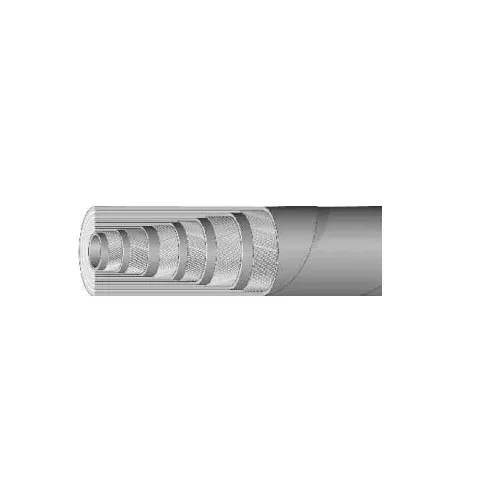In the realm of mechanical and industrial systems, the hydraulic hose plays a crucial role, often going unnoticed but indispensable for the smooth operation of numerous machinery and equipment. To understand the significance of a hydraulic hose, let's delve into its purpose, function, and importance within hydraulic systems.

A hydraulic hose, much like a garden hose, serves as a conduit for fluid transfer. However, instead of water, it carries hydraulic fluid—a specialized type of liquid designed to transmit pressure and force within a hydraulic system. This fluid is essential for converting mechanical energy into hydraulic power, enabling the operation of various components and mechanisms.
Hydraulic hoses are typically constructed from durable materials that can withstand high pressures, temperatures, and the abrasive nature of hydraulic fluids. The inner tube, often made of synthetic rubber or thermoplastic, is designed to be compatible with the hydraulic fluid to prevent degradation. Surrounding this tube is a reinforcement layer, usually braided wire or fiber, which provides the necessary strength to handle high-pressure applications. The outer cover, or jacket, protects the hose from external damage, such as abrasion, cuts, and environmental factors.
Hydraulic systems rely on the precise control of fluid pressure and flow to perform a wide range of functions, from lifting heavy loads to operating precision machinery. The hydraulic hose is a vital component in this process, as it allows the fluid to flow seamlessly between the pump, valves, actuators, and other system components. Without a reliable hose, the system would be unable to function efficiently, leading to potential failures and downtime.
Hydraulic hoses are found in a multitude of industries and applications, including:
Construction Equipment: Cranes, excavators, and other heavy-duty machinery use hydraulic systems to lift and move materials.
Agricultural Machinery: Tractors, harvesters, and other farm equipment rely on hydraulic systems for power steering, lifting, and other functions.
Automotive Industry: Hydraulic brakes and suspension systems in many vehicles utilize hydraulic hoses to transmit force and control.
Manufacturing: Hydraulic presses, robotic arms, and other automated machinery often use hydraulic systems powered by hoses.
Aerospace: Hydraulic systems in aircraft control flight surfaces, landing gear, and other critical systems.
Due to their constant exposure to high pressures and abrasive environments, hydraulic hoses are subject to wear and tear over time. Regular inspections and maintenance are crucial to ensure the integrity of the hose and prevent potential failures. Signs of wear, such as bulging, cracking, or leakage, indicate that the hose may need to be replaced to maintain system performance and safety.
In summary, a hydraulic hose is a fundamental component in the operation of hydraulic systems, enabling the efficient transfer of hydraulic fluid and the conversion of mechanical energy into useful work. Its design combines durability and functionality, making it indispensable in a wide range of industries and applications. Regular maintenance and timely replacement are essential to ensure the continued reliability and performance of hydraulic systems, ultimately safeguarding the operation and productivity of countless machinery and equipment.
-
TradeManager
Skype
VKontakte
